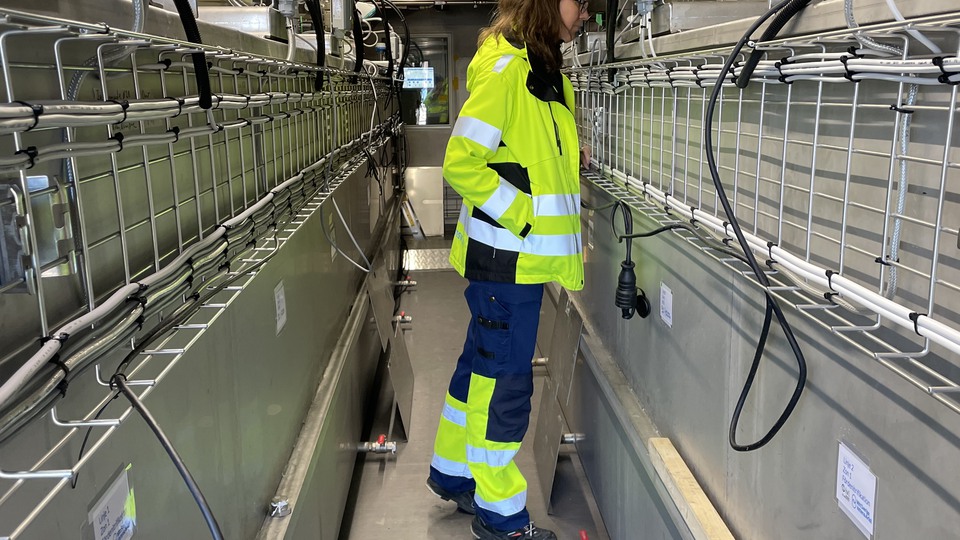
Malin Tuvesson at the pilot facility in Sundsvall. Photo: Camilla Borgström, MSVA
SEK 20 million for research on nitrogen and phosphorus removal in cold water
Since autumn 2021, Sundsvall has been the epicentre for research to find the most effective way to remove nitrogen from wastewater that is cold for much of the year. Formas – a Swedish Research Council for Sustainable Development – has just granted SEK 20 million for an additional five years of research. The project is headed by MittSverige Vatten och Avfall and IVL Swedish Environmental Research Institute, and is part of the national research programme on oceans and water.
A warmer climate may change the nutrient balance in the Bothnian Sea and the Bothnian Bay, with nitrogen emissions leading to algal blooms. This is already a major problem in the Baltic Proper, but not yet in the northern parts of the Baltic Sea. There are currently no requirements for nitrogen removal north of Norrtälje, but the EU is now signalling new requirements for northern Sweden.
"The warming climate may increase the sensitivity of the Bothnian Sea and the Bothnian Bay, and cause nitrogen emissions to lead to algal blooms. If there are requirements for nitrogen removal, we must have sufficient knowledge about how to supplement treatment plants in Norrland with the nitrogen removal step without increasing the climate impact through, for example, increased nitrous oxide emissions", says Andriy Malovanyy, researcher at IVL Swedish Environmental Research Institute.
Therefore, part of the project is to study the nutrient conditions in the Gulf of Bothnia and, through modelling, analyse different scenarios for future emissions from wastewater treatment plants. However, apart from the positive effect on the environment through reduced emissions of nitrogen, nitrogen removal can lead to a greater climate impact through increased use of chemicals and emissions of nitrous oxide formed during nitrogen removal. It is therefore important to optimize the process in order to reduce the environmental impact from a broader perspective.
"Our challenge is to find a removal method that's effective in our cold climate, and that reduces reliance on chemicals and minimizes climate impact. We may have to rebuild the wastewater treatment plants from scratch and then we have the chance to choose an efficient and resource-saving treatment technology”, says Malin Tuvesson, development manager at MittSverige Vatten & Avfall.
Some of the research will be conducted at the existing pilot facility at Fillanverket in Sundsvall, which will be rebuilt and adapted to the project's partly new focus on also removing biological phosphorus. Both biological phosphorus separation and nitrogen removal require readily degradable organic substances (carbon source).
"The previous pilot trials in Sundsvall showed that the availability of organic material in cold water is insufficient for effective nitrogen purification. "In the new project, we will therefore also study how an internal carbon source can be produced from the sludge that is separated at the beginning of the treatment process”, says Malin Tuvesson.
For more information, contact:
Andriy Malovanyy, andriy.malovanyy@ivl.se, tel. +46 (0)10-788 68 74
Malin Tuvesson, MSVA, malin.tuvesson@msva.se, tel. +46 (0)73-275 25 66
The project is headed by MittSverige Vatten & Avfall and IVL Swedish Environmental Research Institute. Other participants are Lund University, Stockholm University and the water and wastewater organisations Lumire (Luleå), Miva (Örnsköldsvik), Vakin (Umeå, Vindeln and Nordmaling municipalities), Boden Municipality and SKY Vocational College.
